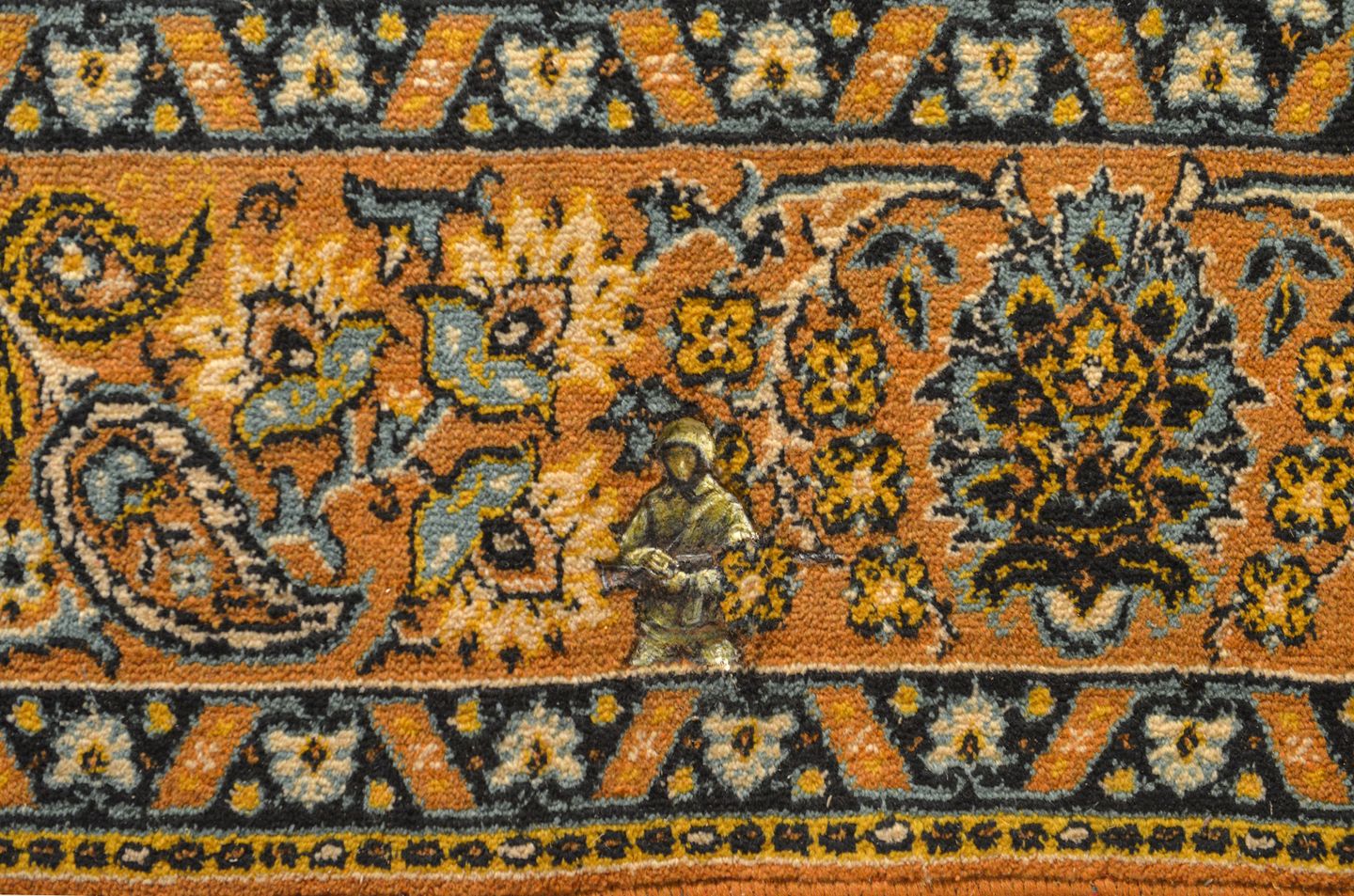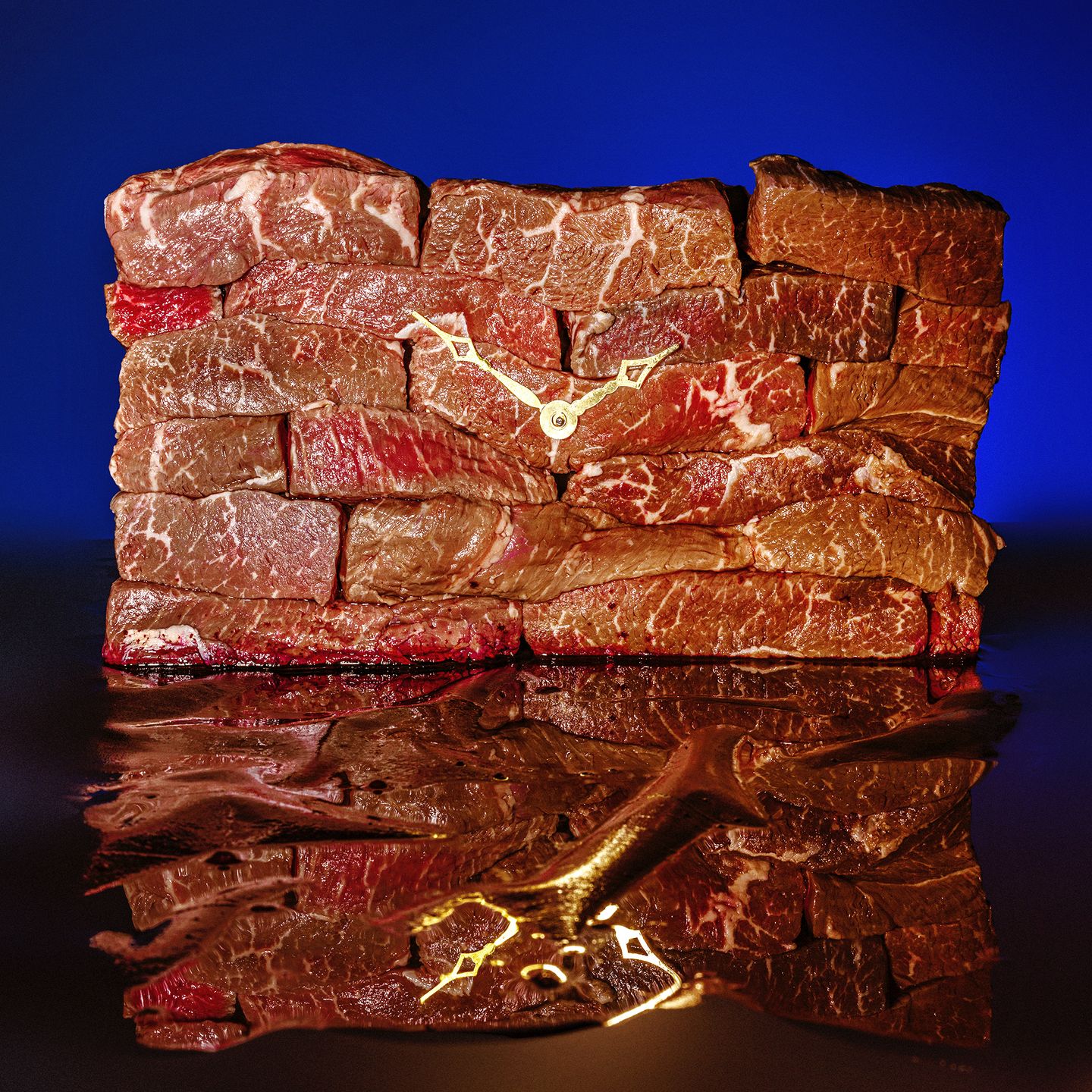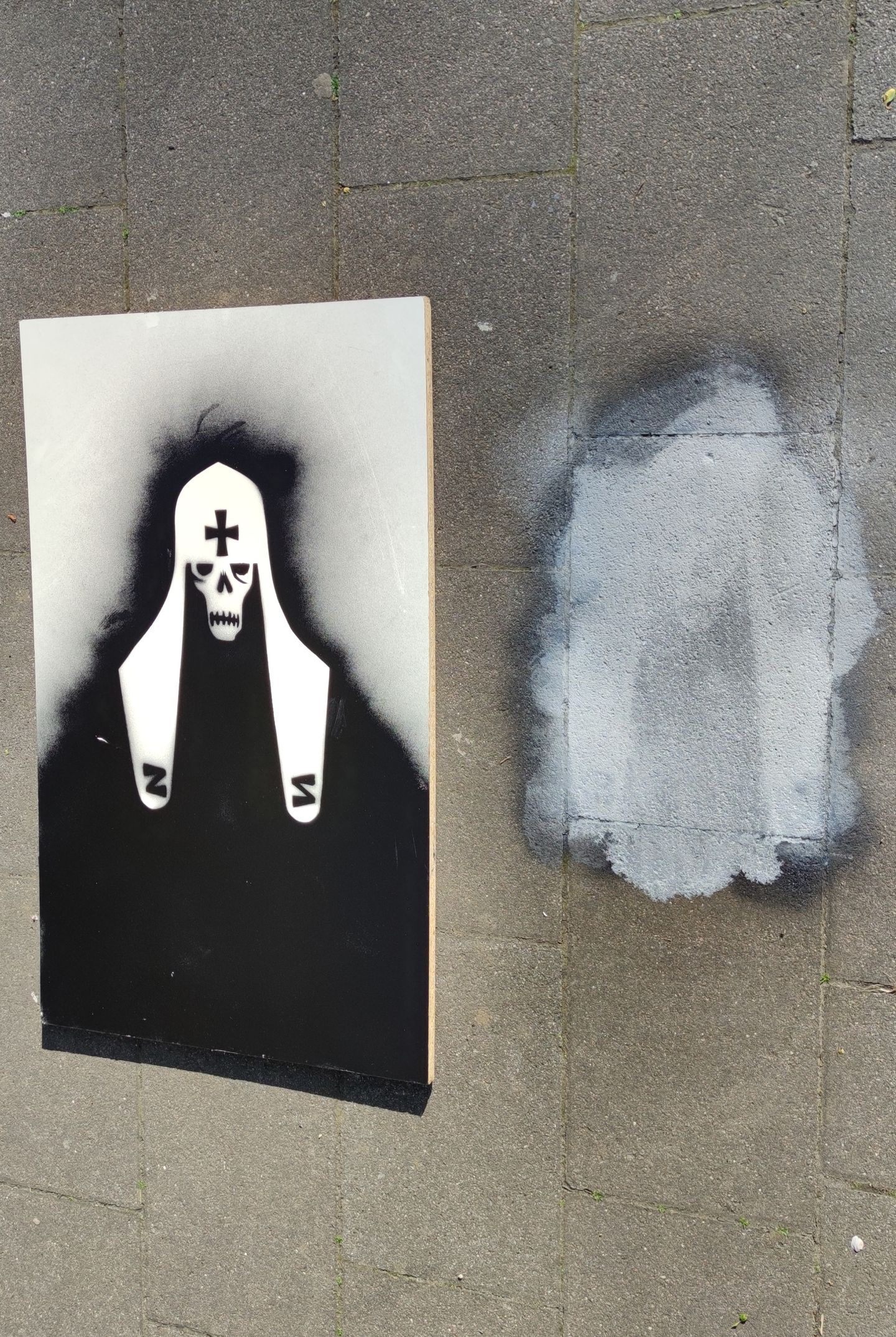ROAR:#1 , April 2022
Anya Likhtikman
I live in Israel, and my Russian-speaking life takes place on the Web. I have friends, employers and co-authors there. For two weeks I could not draw, I just followed the news. Picture "What?" – about it. Then I woke up, I had to get to work, and immediately realized that I didn’t need to draw anymore: the project was no more, my colleagues are now a “statistical error”, prisoners and refugees.

Anonymous-17
This work was done after Bucha. During the war, everyday objects take on a different meaning. This is a good habits tracker, as soldiers at the front could use it.

Party of the Dead
The Party of the Dead is a political and artistic project that appeared in 2017 in St. Petersburg. The existence of the party is a response to the death of politics and the politics of death, including (and primarily) that which is being pursued by the Russian state. On February 22, 2022, after recognizing the “independence of the LDNR” and on the eve of the war, the party held an anti-war action at the Piskarevskoye Memorial Cemetery, which had been recently desecrated by Putin’s visit, against the unscrupulous politics of memory that uses the dead to justify military aggression. On March 7, 2022, towards the end of the second week of the war, the party of the dead held the “Z-200” action, dedicated to the necropolitics of Putinism: hushing up the number of losses among the Russian military, lies about the non-use of conscripts in the “special operation”, as well as those egregious circumstances when mothers are told from the screens that their children are “fake”, and the bodies of the dead are simply left to rot in a foreign land, as if they did not exist at all.





Sergey Maksimishin
I'm not sure that some text is needed, everyone understands everything.
The photographs were taken in Grozny and its environs in January-February 2000.








ROAR:#2 , June 2022
Pavel Otdelnov
In my Soviet childhood, I fell asleep looking at the patterns on the carpet. I always thought they were hiding something creepy. The title of my work refers to Sigmund Freud's essay Das Unheimliche ("The Creepy"). In this text, Freud argues that the uncanny is hidden in the everyday. It is always there, but we are used to not noticing it.
Is it not there, behind the façade of the Soviet past and behind the nostalgia for it, that one should look for the causes of today's catastrophe?
Fragment Gallery:








General form:

ROAR:#3 , August 2022
Katya Efimova
Every day Russia continues to kill and inflict unbearable pain on people. Ordinary living people. Just like me. To my neighbours. All the notorious greatness of the country is built on bones. Behind every diamond in the kokoshnik of the Russian Empire is suffering and death. Behind every brick in the Kremlin wall is suffering and death. For what now?


The Fjodorr team
On March 14, the head of the Russian Orthodox Church, Patriarch Kirill, handed over the icon of the Mother of God to the head of the National Guard, Viktor Zolotov, so that its image would inspire “young soldiers of the National Guard who embark on the path of defending the Fatherland” and take part in a “special military operation.”
We read about it and on the night of April 22, on Good Friday, we made the graffiti "Patriarch of War". One of them is on the pavement in front of the entrance to the Russian Orthodox Church in Hamburg. There, next to the gate, hangs a portrait of Gundyaev. The next morning it was painted over with gray paint – not a portrait, but graffiti. Then we handed over to the Russian Orthodox Church another “Patriarch of War” – on the board. So that his image reminds that there will be no resurrection, no forgiveness.


Andrey Kumanin
These dolls arose by chance a couple of years ago. In the forge of a metallurgical plant in Israel. They are made from old mittens – the ones that are sewn in the zone. And from the used broken wooden pallets on which the metal is transported. It was called "Theater of working gloves". The theater had to put on something. And the dolls chose Shalamov's Kolyma Tales. And then the war began. The repertoire has changed. But the clothes and faces remained the same – as in the Kolyma Tales.



ROAR:#4 , October 2022
Maria Subbotina
"Precious Defender"
Made from native Ukrainian minerals
The very bowels of the Ukrainian land, their color and texture suggested this story to me. When an invader advances, an eternal native Warrior in beryl armor rises from the depths to defend. Heliodor – "sun stone" – gives his actions the invincible power of Light. Turns on military magic, deep alchemy. The Earth itself hurts under blows, and comforts all its children. He jokes with the enemy and takes him into himself, becoming death.
Heroes don't die. Glory to heroes!
The Ukrainian land remembers everything and will overcome everything. And let not a single criminal who encroached on her freedom and dignity go unpunished.
The image with the flag on the tank in the background is the triumphant Chernobaevka. (Because the chorus.)
"Explosion" – the spirit of "Smoke", giving and offering the enemy a light in the wrong place, is made mainly of ammonia. (To sober up.)
The war is unbearably terrible and deadly, it blackens the wings of the protector, but he remains the eternal warrior of light. Morality is stronger than death. A girl-Ukraine made of topazes of great rarity is consoled by a large goethite cat.
The composition of the painting "Precious Protector":
Anapaite, Ca2Fe2+(PO4)2×4H2O, Kerch, Crimea, Ukraine
Apophyllite, rare earth in pegmatite, Prudyansky quarry, Ukraine
Astrophyllite, Dmitrievka, Azov region, Ukraine
Heliodor, Be3Al2Si6O18, Volodarsk-Volynsky, Ukraine
Beryl, Volodarsk-Volynsky, Ukraine
Boulangerite in quartz, Esaulovka, Nagolny ridge, Donbass, Ukraine
Vivianite-kerchenite, Fe2+3(PO4)2 8H2O, Kerch, Ukraine
Galena in phosphorite concretion, Podolia, Ukraine
Goethite, Volodarsk-Volyn pegmatite field, Ukraine
Grunerite-asbestos, Krivoy Rog, Ukraine
Carbonate-fluorapatite (phosphorite), Kamenetz-Podolsk, Khmelnytsky region, Ukraine
Quartz (rock crystal), Nagolny ridge, Donbass, Ukraine
Cinnabar, HgS, Nikitovka, Donbass, Ukraine
Labradorite, Volyn, Ukraine
Langbeinit, Kalush, Prykarpattya, Ukraine
Manganese ore, Ukraine
Monazite, grains in quartz with prosopit and weberite, Kern, Perga, Ukraine
Morion, Volodarsk-Volyn pegmatite field, Ukraine
Ammonia, Kalinina, Donbass, Ukraine
Petalit, Shevchenkovskoye field, Ukraine
Spodumen, Shevchenko field, Ukraine
Stryuverite, albite (clevelandite), Volodarsk-Volyn pegmatite field, Ukraine
Topaz, Al2(SiO4)(F,OH)2, Volodarsk-Volyn pegmatite field, Ukraine
Topaz on albite, Volodarsk-Volynsky, Ukraine
Topaz with fluorite inclusions, Volodarsk-Volynsky, Ukraine
Phenakit, Volodarsk-Volyn pegmatite field, Ukraine
Fluorite, Volodarsk-Volynsky, Ukraine
Chalcedony after sea lilies, limestone replaced by chalcedony, Azov region, Donbass, Ukraine
Schorl, Korets, Ukraine
Erionite in calcite, Karadag, Crimea, Ukraine
Yantar, Ukraine.
Sources of figurative inclusions are images from banknotes and coins of the National Bank of Ukraine.
The view of the defender is Taras Topolya , frontman of the Antitila band. Fired up the heart. You are the Light of the World!
My solidarity is with the figures of contemporary art who defend their Land and Freedom on the side of good! Dear warriors, defenders and defenders, come back alive and burn hearts with your creativity! Everything will be Ukraine.
Glory to Ukraine!

Marina Skepner
Me And My Army is another work on the topic of daily internal resistance. Every day I breastfeed my daughter and read the news. I hope my horror is not passed on to her with milk. I collect the excess milk and slowly draw little people on a large sheet – this is my imaginary army. Milk alone is not enough, little men are invisible for the time being – you need fire or strong heat to manifest them: this is how technology itself repeats life.

The exhibition "ROAR // Everything is clear" takes place here


